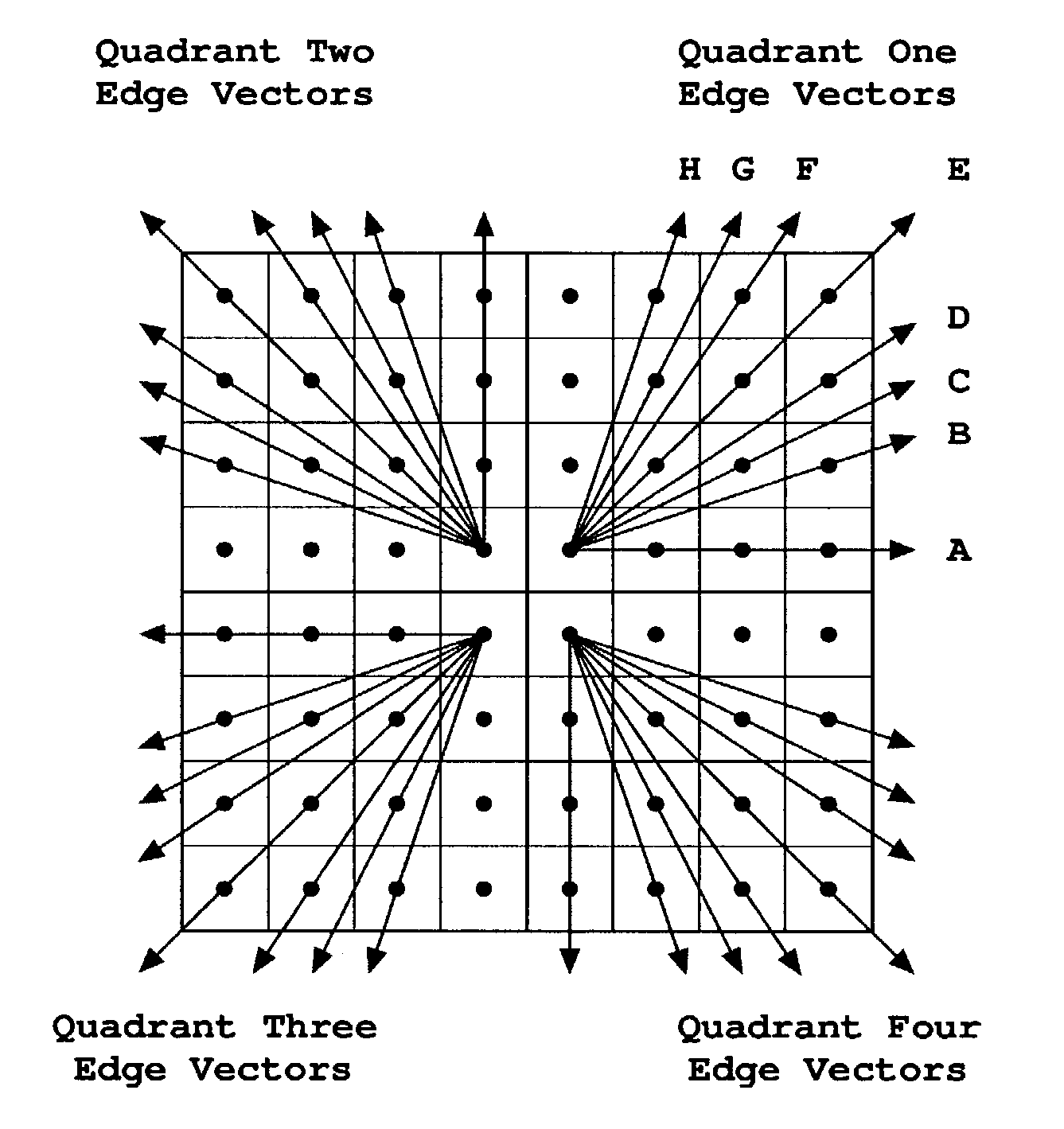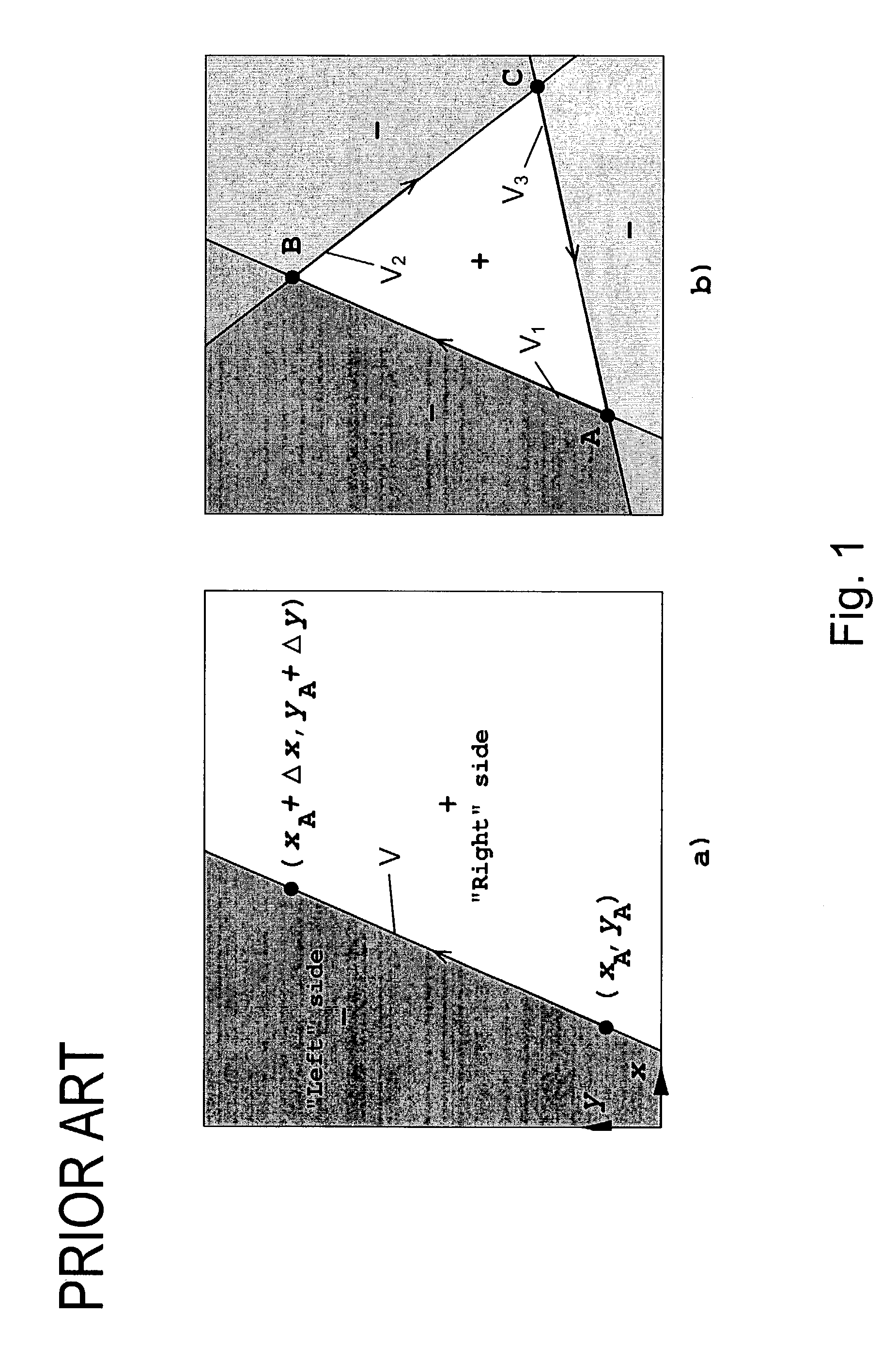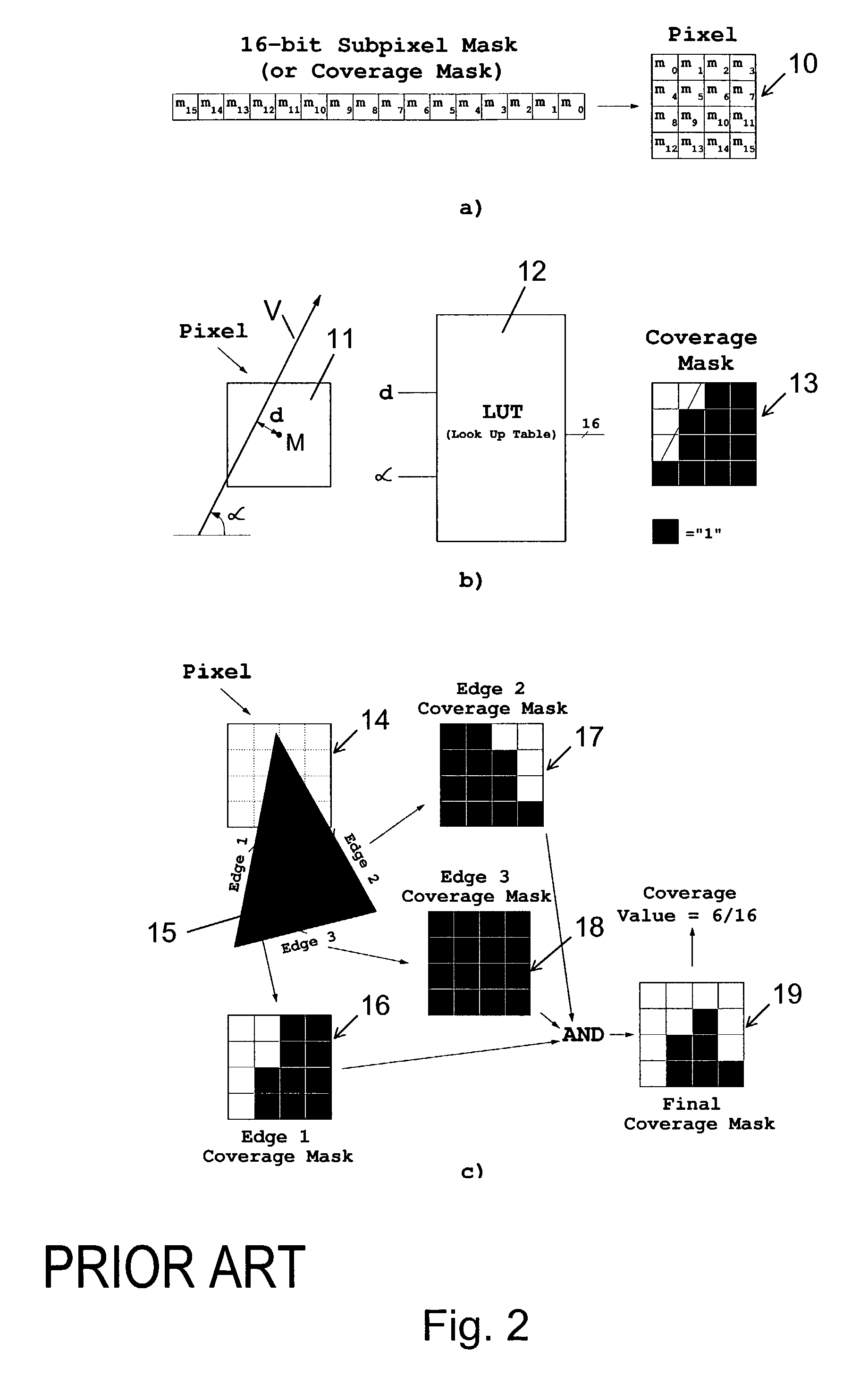Determining a coverage mask for a pixel
a technology of determining and pixel, applied in the field of determining for a pixel, can solve the problems of inability to eliminate total, inability to accurately define edges, image aliasing, etc., and achieve the effect of reducing storage space, adequate edge smoothing, and reducing storage requirements
- Summary
- Abstract
- Description
- Claims
- Application Information
AI Technical Summary
Benefits of technology
Problems solved by technology
Method used
Image
Examples
Embodiment Construction
[0098]FIGS. 1 to 3 have been described above.
[0099]An embodiment of the method according to the invention will now be described with reference to FIGS. 4 to 12. The embodiment enables an antialiasing with pre-filering. More specifically, it allows to determine a coverage mask for an edge vector detected for a triangle by means of a look-up table. The edge vector is detected as in the above described prior art solutions employing a triangle rasterization with edge functions.
[0100]The presented embodiment makes use of the mathematical framework of the above cited documents “A Parallel Algorithm for Polygon Rasterization” and “A New Simple and Efficient Antialiasing with Subpixel Masks”, which are both incorporated by reference herein.
[0101]For the presented embodiment, a new edge vector class clusterization in the four quadrants of the plane is defined. This new clusterization is illustrated in FIG. 4.
[0102]FIG. 4 shows a first quadrant Q1, a second quadrant Q2, a third quadrant Q3 an...
PUM
 Login to View More
Login to View More Abstract
Description
Claims
Application Information
 Login to View More
Login to View More - R&D
- Intellectual Property
- Life Sciences
- Materials
- Tech Scout
- Unparalleled Data Quality
- Higher Quality Content
- 60% Fewer Hallucinations
Browse by: Latest US Patents, China's latest patents, Technical Efficacy Thesaurus, Application Domain, Technology Topic, Popular Technical Reports.
© 2025 PatSnap. All rights reserved.Legal|Privacy policy|Modern Slavery Act Transparency Statement|Sitemap|About US| Contact US: help@patsnap.com



